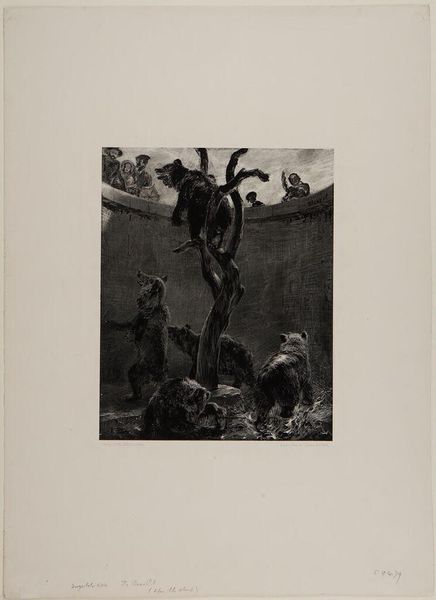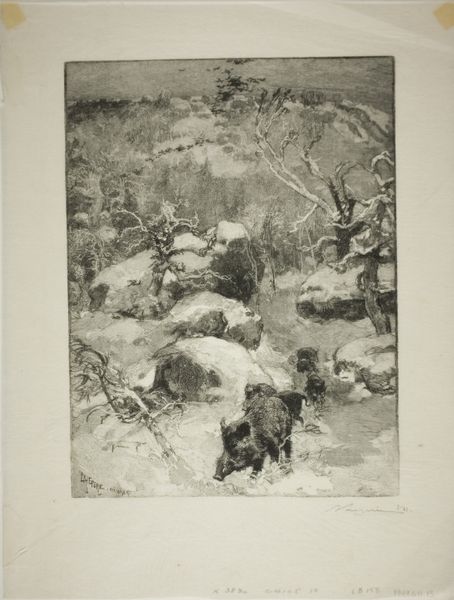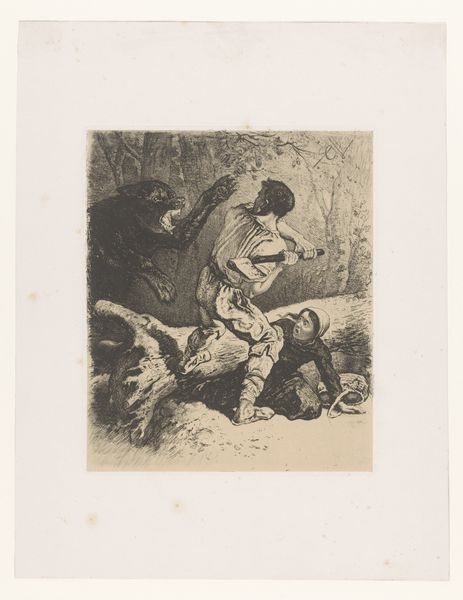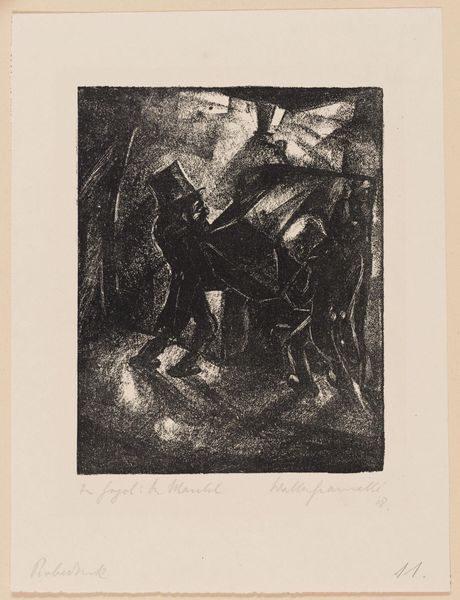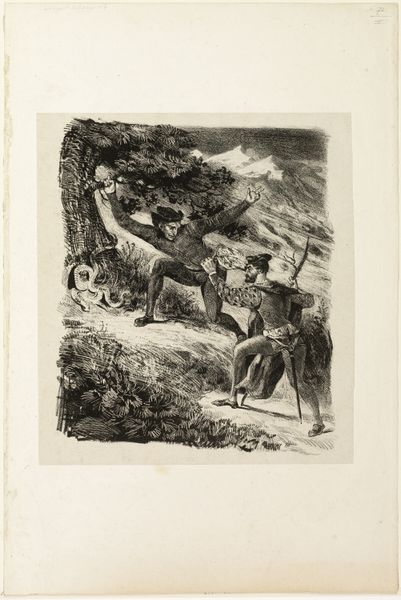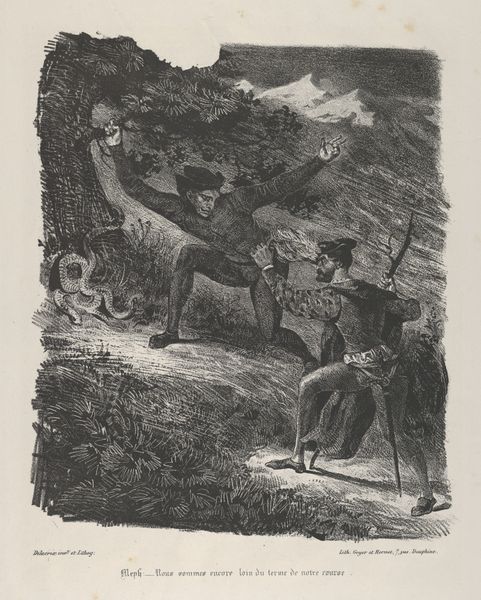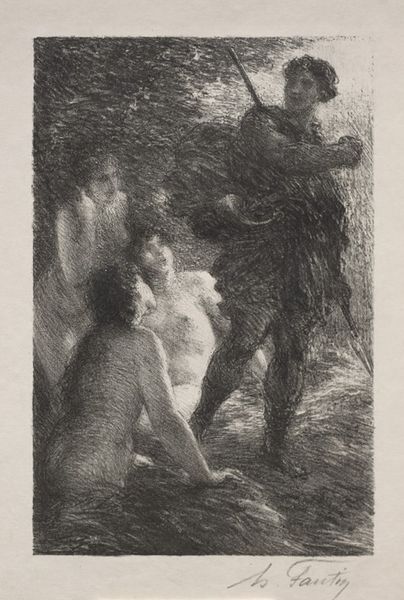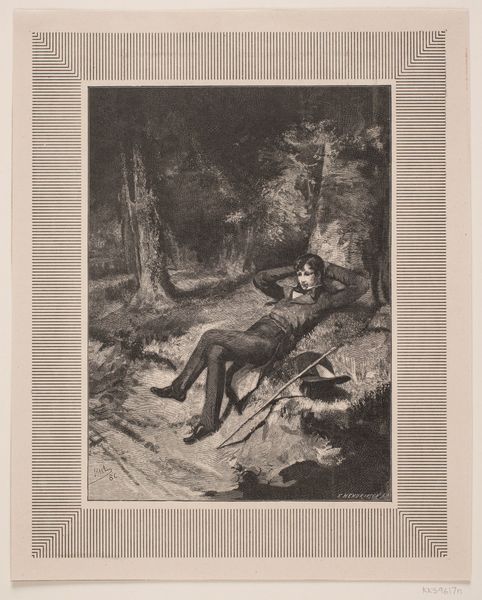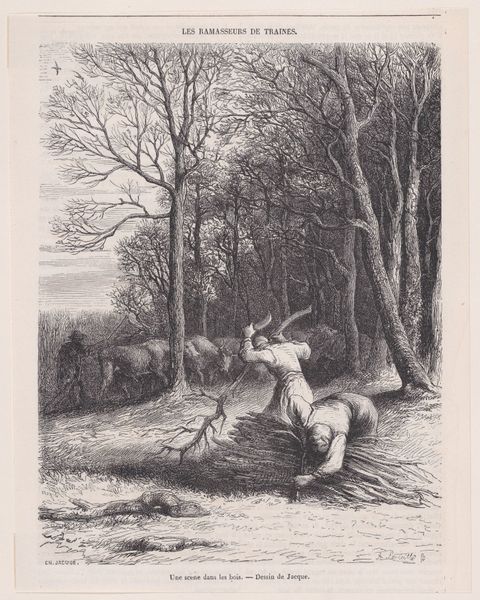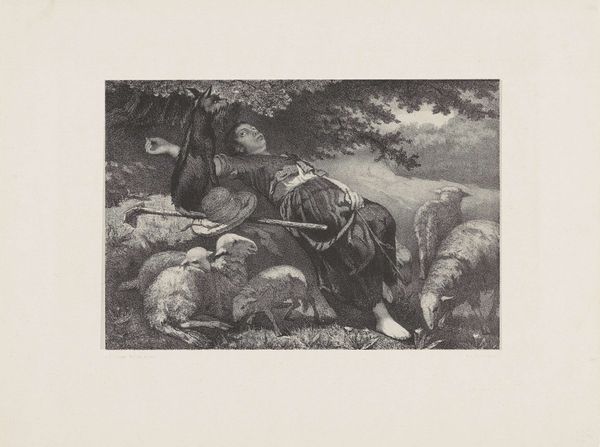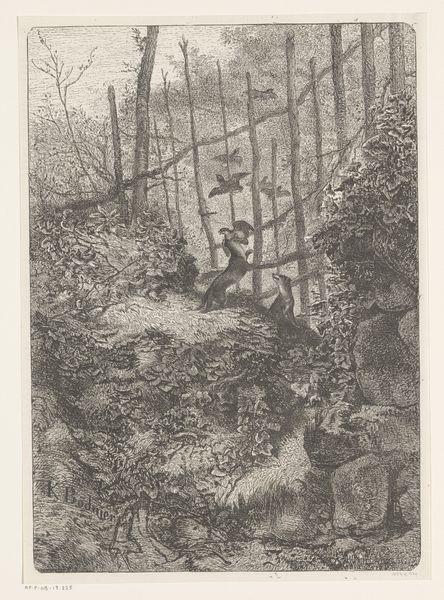
Dimensions: 235 × 155 mm (image); 327 × 246 mm (sheet)
Copyright: Public Domain
Curator: Welcome. Here we have Henri Fantin-Latour’s lithograph, "Tuba Mirum Spargens Sonum," created around 1888, a print rendered on paper, currently residing here at the Art Institute of Chicago. Editor: Well, it's certainly a swirling mass, isn't it? There’s a kind of frantic energy to it, a sense of figures caught in a vortex. Curator: Absolutely. Look closely at the process: Fantin-Latour was known for his embrace of lithography, a method uniquely suited to achieving such tonal complexity through the layering of ink. The very texture of the stone contributes to the frenzied atmosphere, reflecting, perhaps, the tumultuous artistic and political climate of late 19th century France. It moves away from traditionally valued oil paintings to something more accessible and reproducible, expanding readership. Editor: What strikes me most is the stark imagery, the clear division between darkness and light. The figures wielding those… trumpets?… seem to be enacting some kind of dramatic announcement, perhaps of a coming judgment, or even a celebration of sorts. The whole thing is infused with that late Romantic fascination with the grandiose. Curator: You've picked up on important clues! The title itself, "Tuba Mirum Spargens Sonum," is a phrase taken from the Requiem Mass, specifically, the "Day of Judgment". The instruments you mentioned are indeed trumpets wielded by angelic figures announcing the arrival of the last judgment. It is interesting to explore its relationship to music. Fantin-Latour was greatly inspired by composers such as Wagner and Berlioz. This work reflects an ongoing fascination with Wagner's operas. Editor: Fascinating. It feels as though it captures both the terror and the sublime beauty of that imagined moment. Consider how the angelic figures almost dissolve into the background. Curator: I'd argue that the print's success relies on Fantin-Latour’s skilled manipulation of material qualities of lithography. He found a way to visualize complex musical narratives by harnessing tonal qualities. Editor: True, yet the work also stands as a potent symbol of its time: an era grappling with massive shifts in society and art. It captures an experience on a human, emotive level, through accessible allegories that still resonate today. Curator: I agree. Examining "Tuba Mirum Spargens Sonum" unveils so much, from production techniques to deeper meanings. Editor: Absolutely, it offers a glimpse into not only Fantin-Latour’s world, but also timeless anxieties and fascinations.
Comments
No comments
Be the first to comment and join the conversation on the ultimate creative platform.
